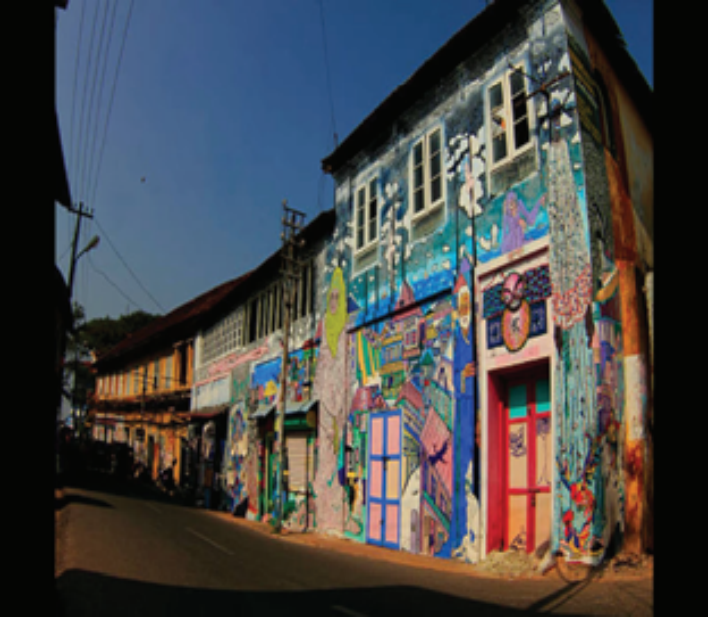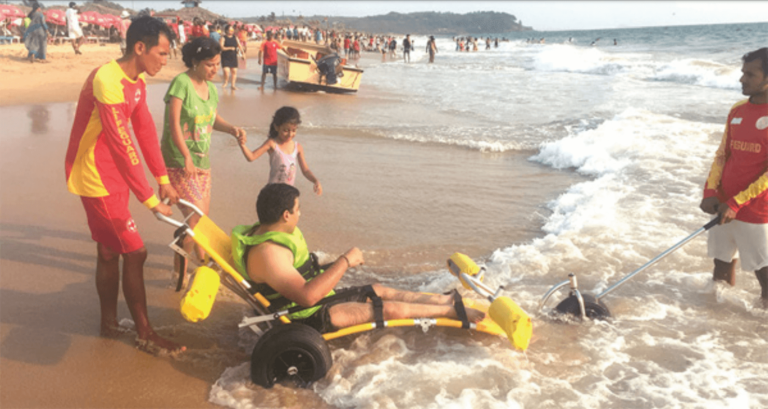In tune with the digital era, Sahil Sharma elaborates how India is redefining the tourism experience by embracing technology. From enchanting virtual tours to translation apps, India’s utilisation of technology is transcending barriers, offering an unparalleled, enriching travel experience for all. He says it is an inclusive activity enabling people to connect with history and culture surpassing all limitations.
In this digital age, where every facet of life is concealed in the embrace of technology, tourism is no exception. The convergence of innovation and exploration brings forth a symphony of possibilities, transforming the way we travel.
India is redefining the tourism experience by embracing technology. From enchanting virtual tours to translation apps, India’s utilisation of technology is transcending barriers, offering an unparalleled, enriching travel experience for all.
Virtual tours are increasingly commonplace and are diversifying with each passing dat. These tours use augmented reality to transport visitors to different places. This is a very inclusive activity as it enables people with disabilities to experience historical sites. It’s a way for everyone to connect with history and culture surpassing all limitations.
Smart destination management systems empowered by data analytics and IoT devices, monitor footfall and environmental parameters in real-time. These systems become the custodians of fragile ecosystems, ensuring that the footsteps of travellers do not disrupt the delicate balance of nature. Through these technologies, India is setting an example, demonstrating that the allure of exploration need not come at the expense of the environment.
Accessible accommodations
India is working towards providing wheelchair-friendly accommodations. These places are designed with features like ramps and spacious interiors, ensuring comfort for all travellers. Travelling as a differently-abled person is not an easy task and often comes in the way of a fulfilling travel experience especially when the zone or the facility is not accommodative of their needs.
Kochi Fort in Kerala was the first tourist spot in India that was declared disabled-friendly. In 2016, Kerala took substantial steps to ensure there are special ramps, non-slippery tiles and other features for the elderly and the differently-abled persons. Over time, Kerala has made significant growth in terms of providing accessible and disabled-friendly tourism facilities such as special houseboats, etc.
There is an increased awareness among members of the industry to make tourism experience more inclusive and friendly for all. Candolim Beach in Goa was the first wheelchair-friendly beach in India and it also hosted a wheelchair-accessible beach festival that included several activities such as wheelchair cricket, kite-flying, beach bowling, etc.
In 2010, the Ministry of Tourism initiated steps towards making travel destinations friendly for the persons with disability including making suitable toilets and ramps and assistance for those using sign language. Later, guidelines were issues to the Archaeological Survey of India (ASI) and four- and five-star hotels on how to be more accessible and inclusive.
Guiding by light
The Ministry of Tourism’s Accessible Tourism Guidelines for India has identified key barriers to accessible tourism. Some of these include:
– Appropriate signage and wayfinding systems
– Digital and alternative systems for conveying information for transportation, sightseeing, services, equipment, rentals
– Language barrier
– Maps in visual, tactile and audio formats
– Readability of text in signage
– Poor visual contrast in signage
– Absence of rails, ramps
– Steep slope, slippery surface, faulty ramp, broken sidewalks
– Lack of accessibility in public toilets
– First and last mile connectivity
– Boarding / Alighting various modes of transport
– Insufficient lighting and illumination at railway stations or bus terminals
– Inaccessible booking portals (websites/apps)
– Untrained staff
– Access to tourism resources (natural and cultural attractions, among others) and to general resources (shops, pharmaceuticals)
– Maintenance and periodic check of accessibility features
Multi-pronged approach
Tactile signs help those with visual impairments explore tourist sites. This technology has been making India’s cultural heritage accessible to all and India has been pioneering it. Additionally, other technology programmes and features are being used to make tourism accessible for everyone.
India’s diverse culture can be a linguistic challenge, but translation apps bridge that gap. Conversations flow smoothly, unburdened by language differences. India’s use of technology creates an inclusive and harmonious travel experience.
Virtual tours, accessible accommodations, tactile signs, and translation apps erase barriers. India invites travellers of all kinds, transcending ability and language.
India’s tech-driven travel is not just about inclusivity, but also sustainability – innovation harmonises travel with nature. In busy Indian cities, eco-friendly transportation is a priority. Electric vehicles in ride-sharing platforms lead this green revolution.
Preserving ecosystems, while allowing exploration, is important. Technology helps monitor and protect fragile environments.
India’s commitment to sustainable travel offers a model for nations worldwide. Collaborative efforts in research and development can lead to breakthroughs in sustainable technologies.
Bridging gaps
Technology brings India’s rich culture to life. Augmented reality makes ancient sculptures vivid, and interactive exhibits invite participation in traditional crafts.
India’s tech-driven travel isn’t just for India—it’s a call for global collaboration. Together, nations can harness technology for inclusive, sustainable, and culturally-rich travel experiences worldwide.
Technology bridges cultures. Virtual exhibitions and interactive experiences bring people from different parts of the world closer together, fostering mutual understanding and appreciation and promoting inclusive tourism at the same time.
It’s clear that technology will continue to shape the way we explore the world. The advancements seen in India serve as a beacon, illuminating the path towards a more inclusive and accessible travel experience.

Education plays a pivotal role in ensuring that these technological advancements benefit all. By raising awareness about accessible travel options and sustainable practices, travellers are empowered to make informed choices. As part of a collective effort, governments, businesses, communities, and travellers all have an important role to play.
Research and development
Continued investment in research and development is essential. This will drive innovation in areas like sustainable transportation, conservation technology, and inclusive design, ensuring that the travel experiences of tomorrow are even more enriching and accessible for the differently-abled.
There’s a need to invest in accessible infrastructure, embracing universal design principles, and leveraging technology, to create destinations where every traveller feels welcomed.
In India, several tourist destinations are already welcoming for all. The Qutub Minar in Delhi and other monuments in the vicinity are all well-equipped with ramps. These include Humayun Tomb, Indian Air Force Museum and the National Gallery of Modern Art, etc.
Same goes for the Jagannath Temple in Odisha’s Puri which is accessible by wheelchairs. The Sanchi Stupa in Madhya Pradesh is also well equipped for differently-abled persons. There are tactile walkways at the venue, maps in Braille and all paths are accessible by a wheelchair. Even the Taj Mahal in Agra now has several ramps that help the differently-abled or those in a wheelchair which are also available at the venue.
Digital storytelling
In the labyrinthine bylanes of Varanasi, where the Ganga flows with timeless grace, and in the vibrant markets of Chennai, where the scent of spices lingers in the air, cultural heritage stands as an immutable treasure. Here, technology steps forth as a modern-day bard, amplifying the stories woven into the fabric of India’s diverse tapestry.
Through immersive digital experiences, travellers become protagonists in the unfolding narrative of India’s cultural legacy. Augmented reality installations with 3-D, 4-D and holographic features breathe life into ancient sculptures, allowing visitors to witness the stories that have withstood the test of time. Interactive exhibits beckon, inviting participants to partake in traditional crafts and rituals, forging a connection that transcends the boundaries of time and space.

